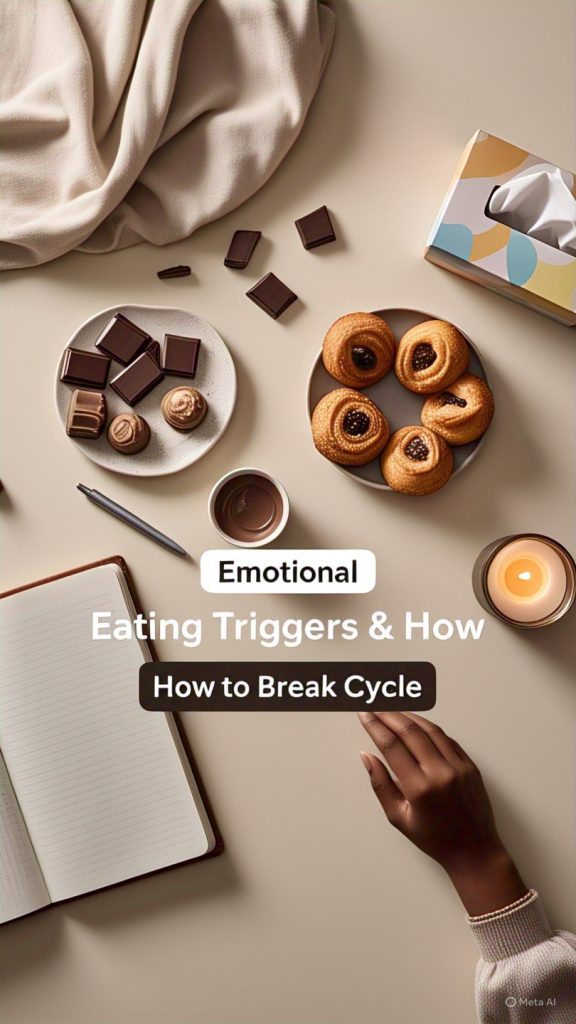Emotional Eating Triggers & How to Break the Cycle
Ever found yourself reaching for snacks when you’re not really hungry? That’s emotional eating—using food to cope with feelings instead of fueling your body. It’s common, and it’s fixable.

What Triggers Emotional Eating?
Emotional eating usually kicks in when we’re:
- Stressed (work deadlines, family tension)
- Bored (scrolling social media with snacks nearby)
- Lonely or sad (seeking comfort or distraction)
- Rewarding ourselves (“I had a rough day—I deserve this”)
Often, the urge comes suddenly and feels urgent. Unlike true hunger, emotional cravings usually center around specific “comfort foods” like sweets, chips, or carbs.
How to Break the Cycle
- Pause & Breathe
When you feel the urge to eat, pause. Ask yourself: Am I actually hungry? A short break can help you respond rather than react. - Name the Emotion
Try saying: “I feel stressed,” or “I’m bored.” Identifying the feeling makes it easier to manage without food. - Create a Feel-Good List
Write down 5 non-food ways to comfort or distract yourself—like walking, journaling, calling a friend, or sipping tea. - Keep a Food + Mood Journal
Tracking what you eat and how you feel helps you notice patterns—and gently shift them. - Be Kind to Yourself
Slipping up doesn’t mean starting over. You’re rewiring years of habits. Progress, not perfection.
Breaking emotional eating is not about willpower—it’s about awareness and compassion. Start small, stay curious, and trust that change is possible. 🌱








